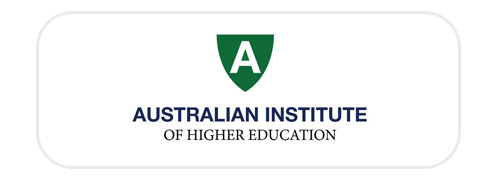Why Australia
Geography, Climate & Wildlife
Government & Economy
Population, Culture & Society
Climate, Environment & Biodiversity
Living Conditions & Cost of Living
Education System
History
- Geography, Climate, Wildlife
- Government & Economy
- History
- Population, Culture & Society
- Education System
- Climate, Environment & Biodiversity
- Living Conditions & Cost of Living
Geography, Climate, Wildlife
Australia is a country in the Southern Hemisphere, south of Asia, near Indonesia, New Zealand, and Papua New Guinea.
It is an island nation that comprises the Australian continent as well as the island of Tasmania and some other small islands. Australia is considered a developed nation, and it has the world’s 12th-largest economy and sixth-highest per-capita income. It is known for high life expectancy, its education, quality of life, biodiversity, and tourism.
Australia is the only country in the world that covers an entire continent. It is one of the largest countries on Earth. Although it is rich in natural resources and has a lot of fertile land, more than one-third of Australia is desert.
Most Australian cities and farms are located in the southwest and southeast, where the climate is more comfortable. There are dense rain forests in the northeast. The famous outback (remote rural areas) contains the country’s largest deserts, where there are scorching temperatures, little water, and almost no vegetation.
Running around the eastern and southeastern edge of Australia is the Great Dividing Range. This 2,300-mile (3,700-kilometer) stretch of mountain sends water down into Australia’s most important rivers and the Great Artesian Basin, the largest groundwater source in the world.
Although it is a large country, its topography is not too varied, and most of it consists of a low desert plateau. The southeast, however, does have fertile plains. Australia’s climate is mostly arid to semiarid, but the south and east are temperate and the north is tropical.
Although most of Australia is arid desert, it supports a wide range of habitats, thus making it incredibly biodiverse. Alpine forests, tropical rainforests, and a wide variety of plants and animals thrive there because of its geographic isolation from the rest of the world.
As such, 92% of its vascular plants, 87% of its mammals, 93% of its reptiles, 94% of its frogs, and 45% of its birds are endemic to Australia. It also has the greatest number of reptile species in the world as well as some of the most venomous snakes and other dangerous creatures like the crocodile.
Australia is most famous for its marsupial species, which include the kangaroo, koala, and wombat.
In its waters, around 89% of Australia’s fish species both inland and offshore are restricted only to the country.
In addition, endangered coral reefs are common on Australia’s coast—the most famous of these is the Great Barrier Reef. The Great Barrier Reef is the world’s largest coral reef system and it stretches over an area of 133,000 square miles (344,400 square kilometers.)
It is made up of more than 3,000 individual reef systems and coral bays and supports more than 1,500 species of fish, 400 species of hard coral, “one-third of the world’s soft corals, 134 species of sharks and rays, six of the world’s seven species of threatened marine turtles, and more than 30 species of marine mammals,” including endangered species, according to the World Wildlife Fund.
Australia is divided politically into six States and two Territories.
- New South Wales (NSW)
- Queensland (Qld)
- South Australia (SA)
- Tasmania (Tas)
- Victoria (Vic)
- Western Australia (WA)
- Australian Capital Territory (ACT)
- Northern Territory (NT)
Government & Economy
Australia, now officially called the Commonwealth of Australia, is a federal parliamentary democracy and a Commonwealth realm. It has an executive branch with Queen Elizabeth II as the Chief of State as well as a separate prime minister as head of government.
The legislative branch is a bicameral Federal Parliament consisting of the Senate and the House of Representatives. The country’s judicial system is based on English common law and is composed of the High Court as well as lower-level federal, state, and territorial courts.
The Australian Government is the federal government of Australia, a parliamentary constitutional monarchy. The Government is also commonly referred to as simply the Federal Government, and previously, the Commonwealth Government. Like many other Westminster-style systems of government, the Australian Government is made up of three branches: the executive (the Prime Minister, the Ministers, and the departments), the legislative (the Parliament of Australia), and the judicial (the High Court of Australia).
The constitutional head of the government is the monarch of Australia, Her Majesty the Queen Elizabeth II, represented in Australia by the Governor-General. The Australian Government in its executive capacity is formed by the party or coalition with a majority in the House of Representatives, with the Prime Minister typically being the leader of the party or coalition with majority. Unlike many other nations, the Prime Minister isn’t directly voted for, but is instead elected by the House of Representatives.
Australia has a strong economy due to its extensive natural resources, well-developed industry, and tourism. The main industries in Australia are mining (such as coal and natural gas), industrial and transportation equipment, food processing, chemicals, and steel manufacturing. Agriculture also plays a role in the country’s economy, and its main products include wheat, barley, sugarcane, fruits, cattle, sheep, and poultry.
History
Due to its isolation from the rest of the world, Australia was an uninhabited island until about 60,000 years ago. At that time, it is believed that people from Indonesia developed boats that were able to carry them across the Timor Sea, which was lower in sea level at the time.
Europeans did not discover Australia until 1770 when Captain James Cook mapped the island’s east coast and claimed the land for Great Britain. On January 26, 1788, colonization of Australia began when Captain Arthur Phillip landed in Port Jackson, which later became Sydney. On February 7, he issued a proclamation that established the colony of New South Wales.
Most of the first settlers in Australia were convicts who had been transported there from England. In 1868 the movement of prisoners to Australia ended, but shortly before that, in 1851, gold had been discovered there, which significantly increased its population and helped grow its economy.
Following the establishment of New South Wales in 1788, five more colonies were founded by the mid-1800s. They were:
- Tasmania in 1825
- Western Australia in 1829
- South Australia in 1836
- Victoria in 1851
- Queensland in 1859
- In 1901, Australia became a nation but remained a member of the British Commonwealth. In 1911, Australia’s Northern Territory became a part of the Commonwealth (prior control was by South Australia.)
- In 1911, Australia’s Capital Territory (where Canberra is located today) was formally established, and in 1927, the seat of government was transferred from Melbourne to Canberra. On
- October 9, 1942, Australia and Great Britain ratified the Statute of Westminster, which began to formally establish the country’s independence.
Population
On 11 February 2018, the resident population of Australia was estimated to be 24,826,764. Australia is one of the least densely populated countries in the world. This is due to its small population and its large area of approximately 7.7 million square kilometres. Australians are among the most urbanized people in the world. For example, just over 60% of them live in the capital cities and about 20% live in Sydney. Also, around 80% of the inhabitants of each state and territory live within 100 km of their capital cities.
Current population can be access from: https://www.abs.gov.au/AUSSTATS/abs@.nsf/Web+Pages/Population+Clock?opendocument&ref=HPKI
Culture and Society
Australians pride themselves on their friendliness and cultural diversity. The population lives in a generally safe, friendly, sophisticated and harmonious society. Many ethnic groups are represented in Australia, making it one of the most culturally diverse countries in the world.
Australia’s diversity is described here:
- 25% of Australians were born in another country;
- 25% of Australians have at least one parent who was born overseas;
- Australian migrants are from more than 140 countries;
- 2% of Australians are of Aboriginal and Torres Strait Islander descent.
Australia is a very open-hearted and open-minded country. There is great respect for the law, for the individual’s freedoms and for playing fair. Just as with other countries, there are those who would flout the law and try to impinge on other people’s choices and freedom, but in general, Australia is a safe, free country with a clean environment, relaxed lifestyle and easy-going culture.
Equality between men and women continues to evolve, however Australia is considered progressive by world standards. Gay marriage was legalised in 2017, the Australian people stand up for what they believe in, generally without the need for violence (though it does happen on occasion) and for the most part, Australians are tolerant, welcoming and obliging. Australia’s population is very multicultural. Most of the world’s religions are practised here and there are plenty of churches, mosques and temples.
When you meet people in Australia, its customary to shake right hands. If meeting a close friend or relative, you may give each other a hug or a kiss on the cheek. Referring to people by their first name is usual unless it’s a very formal occasion. This is the case, for instance, for colleagues, employers, doctors, teachers and neighbours.
If you are invited to someone’s home for a meal or a drink, its customary to take something with you like a cake, a box of chocolates or a small plate of food. If it’s a party, you might be asked to bring your own alcohol.
Even though the national language of Australia is English, there are lots of ways that Australians speak differently to those from, say, the United States or England. Australian slang can be difficult for people from other countries to understand.
Australians love to socialise and the ‘backyard barbie’ (barbecue) is the most common way to entertain at home. Otherwise, going out for a meal or a drink, catching up to see a movie, go for a picnic or to see a live band is also popular.
In general, Australia’s classes can be identified as working class, middle class and upper class, however there is not really any ‘class’ or ‘caste’ system.
Education System
Education in Australia encompasses the sectors of early childhood education (preschool) and primary education (primary schools), followed by secondary education (high schools), tertiary education (universities, TAFE colleges, and vocational education and training providers) and adult education (referred to as adult and community education or ACE). Regulation and funding of education is primarily the responsibility of the States and territories, however the Australian Government also plays a funding role.
Education in Australia is compulsory between the ages of four, five, or six and fifteen, sixteen or seventeen, depending on the State or territory and date of birth.
For primary and secondary education, government schools educate approximately 60 percent of Australian students, with approximately 40 percent in non-government schools.
Each state government manages the school system within their state and provides funding for their schools. Both public schools and private schools exist in each state. The curriculum taught in each state or school may vary but the learning areas are the same in all.
Vocational Education and Training (VET)
Australia has a Vocational Education and Training (VET) system. VET prepares people for work in a career that does not need a university degree. The national body ASQA regulates and manages the system and ensures consistent national standards. Typically, a VET course takes up to two years of study. In the workplace employers use agreed courses and outcomes to set standards of training for employment. Many parts of industry and business provide ongoing workplace training for their employees. Some of this training can count towards a qualification.
Universities
The national government provides the funding for universities in all the states. While each university is independent in its governance and can decide on which courses they want to offer and the course content, they are regulated by TEQSA. Typically, a university course takes three or four years of study.
Australia is a leading global provider of education to international students; and, after the United States and the United Kingdom, is ranked as the third-largest provider of international education. Australia has the highest ratio of international students per head of population in the world by a large margin, with 812,000 international students enrolled in the nation’s universities and vocational institutions in 2019.
Climate and Environment
Australia has a relatively warm climate. However, extreme temperatures have been recorded such as:
- 53°C at Cloncurry (Queensland) in 1889,
- -23°C at Charlotte Pass (NSW) in 1994.
Summers tend to be hotter and more humid in the north and winters are usually colder in the south. These temperature differences are revealed in the average temperatures for Australia’s capital cities in this table (from the Australian Bureau of Statistics):
|
|
JANUARY | JULY | ||
| AUSTRALIAN CITY | Max (°C) | Min (°C) | Max (°C) | Min (°C) |
| Adelaide (SA) | 28.7 | 16.8 | 15.2 | 7.4 |
| Brisbane (Qld) | 29.2 | 21.2 | 20.6 | 9.5 |
| Canberra (ACT) | 27.7 | 13.3 | 11.5 | -0.1 |
| Darwin (NT) | 31.8 | 24.8 | 30.7 | 19.4 |
| Hobart (Tas) | 21.8 | 12.5 | 12.2 | 4.7 |
| Melbourne (Vic) | 25.8 | 15.4 | 13.9 | 6.8 |
| Perth (WA) | 31.9 | 17.2 | 17.9 | 8.4 |
| Sydney (NSW) | 26.1 | 19.4 | 17.2 | 8.6 |
- Overall Australian cities tend to have mild climates in comparison to other cities in English-speaking countries.
Australia has a low average annual rainfall but high falls occur in the north. Northern and Eastern regions have wet summers and central Australia is very dry. This is revealed in the data of the rainfall in Australian cities (from the Australian Bureau of Statistics). Darwin in the tropical north has the highest summer rainfall and highest annual rainfall.
Biodiversity
Australia has a wide variety of unique distinctive flora and fauna. The major reason for this is related to its geological history. Initially, Australia was part of a larger continent but about 40 million years ago it separated fully and became an isolated continent.
After this separation, marsupial mammals best adapted to the Australian environment and eventually dominated it. Australia is one of the few places on Earth to have such a large number of marsupials, and to have the only two monotreme mammals. These two types of fauna can be explained as follows:
- Marsupial mammals give birth to their young and carry them in a pouch. Examples – Kangaroo, Koala, Wombat.
- Monotreme mammals lay eggs instead of giving birth to live young. Examples – Platypus, Echidna.
Despite its long history, Australia’s biodiversity has changed dramatically in the last 200 years. Since European settlement many ecosystems have been radically simplified and fragmented. Also, many plants and animals have been introduced from around the world, and they have had serious environmental consequences.
Living Conditions in Australia
Australia, the world’s only country to encompass an entire continent, is one of the wealthiest countries in the world. Australian residents have access to high-quality healthcare and above average incomes. The country is also home to unique living environments influenced by coral reefs, large deserts and coastal forests. Here are some facts about living conditions in Australia.
Healthcare – Australia has one of the best healthcare systems in the world, contributing to its high average life expectancy of 83 years. The Australian government administers its universal health care through tax revenues that fund it. Private healthcare options are also available for supplementation. As Australia has a mixed healthcare system made up of both public and private options, 100 percent of its residents have access to healthcare.
Wealth – Australia has the second highest median wealth in the world. The average wealth per adult is approximately $411,060. Reports state that the number of millionaires will increase by 41 percent over the next five years to 1.8 million people. Less than 6 percent of the population has an average net worth below $10,000.
Employment – Employment rates in Australia are comparable to other industrialized countries. Seventy-two percent of people between the ages of 15 and 64 have a paid job, which is higher than the Organization for Economic Co-operation and Development’s (OECD) average employment rate of 67 percent. The unemployment rate is low at five percent, with 66 percent of the total available labor force participating in the job market as of May 2019.
Clean Water – Australia is fortunate to have access to some of the world’s cleanest water. According to the World Bank’s Development Indicators, Australia has 100 percent access to clean water and proper sanitation.
Cost of Living
Students should be aware that the costs of studying in Australia will depend on your education provider, the level of study you choose and your study location in Australia.
Knowing the average living costs in Australia is an important part of your financial preparation. For your reference, here are some of the costs associated with living in Australia (all costs are in Australian dollars).
Accommodation
- Hostels and Guest houses – $90 to $150 per week
- Shared Rental – $95 to $215 per week
- On campus – $110 to $280 per week
- Home stay – $235 to $325 per week
- Rental – $185 to $440 per week
- Boarding schools – $11,000 to $22,000 a year
Other living expenses
- Groceries and eating out – $140 to $280 per week
- Gas, electricity – $10 to $20 per week
- Phone and Internet – $15 to $30 per week
- Public transport – $30 to $60 per week
- Car (after purchase) – $150 to $260 per week
- Entertainment – $80 to $150 per week
Why Choose Us?
We are a dedicated team, striving to convert our students dream into reality. We always have been taking pride in being original, reliable and trustworthy. KIEC leaves no stone unturned in easing the study abroad process. Choose us and you will save your time and energy. We promise to keep holding your hand till you go beyond the horizon of success.




















